Posted on April 2, 2013
 “The ABC’s of Amphiphilic Block Copolymers: Nanoparticulate Drug Carriers and Modulators of Drug Efflux”, by Dr. Kevin Letchford, Faculty of Pharmaceutical Sciences, UBC. Monday, April 8, 2013 @ 3:00 pm in LSC #3, 2350 Health Sciences Mall.
“The ABC’s of Amphiphilic Block Copolymers: Nanoparticulate Drug Carriers and Modulators of Drug Efflux”, by Dr. Kevin Letchford, Faculty of Pharmaceutical Sciences, UBC. Monday, April 8, 2013 @ 3:00 pm in LSC #3, 2350 Health Sciences Mall.
Read More | No Comments
Posted on March 26, 2013
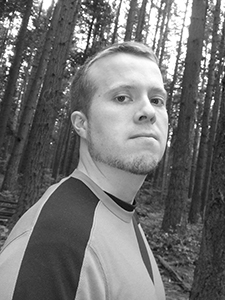 “A conserved role for the GPN small GTPases in RNA polymerase biogenesis”, by Sean Minaker, Biochemistry & Molecular Biology, UBC. Monday, April 29th @ 3:00 pm in LSC #3, 2350 Health Sciences Mall.
“A conserved role for the GPN small GTPases in RNA polymerase biogenesis”, by Sean Minaker, Biochemistry & Molecular Biology, UBC. Monday, April 29th @ 3:00 pm in LSC #3, 2350 Health Sciences Mall.
Read More | No Comments
Posted on March 19, 2013
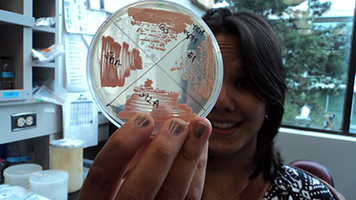 “Exploring the genetic interactome of a Saccharomyces Cerevisiae separase Mutant”, by Krystina Ho, Measday Lab, Department of Biochemistry & Molecular Biology, UBC. Wednesday, April 17 @3:00 p.m. Michael Smith Lab, 2185 East Mall, Room 102.
“Exploring the genetic interactome of a Saccharomyces Cerevisiae separase Mutant”, by Krystina Ho, Measday Lab, Department of Biochemistry & Molecular Biology, UBC. Wednesday, April 17 @3:00 p.m. Michael Smith Lab, 2185 East Mall, Room 102.
Read More | No Comments
Posted on March 8, 2013
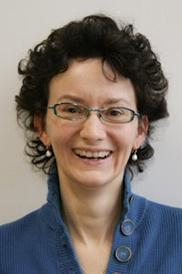 “Keeping it together in mitosis — Pds5 maintains sister chromatid cohesion by antagonizing polysumo-targeted proteolysis of cohesin”, by Dr. Bridgitte Lavoie, Department of Molecular Genetics, University of Toronto. Thursday, April 4, 2013 @ 12:30 pm in LSC #3, 2350 Health Sciences Mall.
“Keeping it together in mitosis — Pds5 maintains sister chromatid cohesion by antagonizing polysumo-targeted proteolysis of cohesin”, by Dr. Bridgitte Lavoie, Department of Molecular Genetics, University of Toronto. Thursday, April 4, 2013 @ 12:30 pm in LSC #3, 2350 Health Sciences Mall.
Read More | No Comments
Posted on March 6, 2013
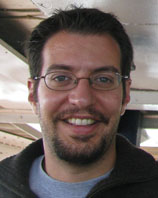 “Beyond the signal Sequence hypothesis: How mRNA’s encoding secretory proteins are trafficked and translated in mammalian cells”, by Dr. Alexander Palazzo, Assistant Professor, Department of Biochemistry, University of Toronto. Monday, March 18 @ 3:00 pm in LSC #3, 2350 Health Sciences Mall.
“Beyond the signal Sequence hypothesis: How mRNA’s encoding secretory proteins are trafficked and translated in mammalian cells”, by Dr. Alexander Palazzo, Assistant Professor, Department of Biochemistry, University of Toronto. Monday, March 18 @ 3:00 pm in LSC #3, 2350 Health Sciences Mall.
Read More | No Comments
Posted on March 4, 2013
 “Bugs ‘R Us: The Role of Microbes in Health, Disease and Society”, lecture with Dr. B. Brett Finlay, Peter Wall Institute Distinguished Professor, Professor in the Department of Biochemistry & Molecular Biology and Department of Microbiology & Immunology at UBC. For free tickets: Peter Wall Downtown Lecture Series held at the Vogue Theatre at 7:30. Doors open at 6:30.
“Bugs ‘R Us: The Role of Microbes in Health, Disease and Society”, lecture with Dr. B. Brett Finlay, Peter Wall Institute Distinguished Professor, Professor in the Department of Biochemistry & Molecular Biology and Department of Microbiology & Immunology at UBC. For free tickets: Peter Wall Downtown Lecture Series held at the Vogue Theatre at 7:30. Doors open at 6:30.
Read More | No Comments
Posted on March 4, 2013
 “Voltage gated calcium channels as targets for pain therapeutics”, by Dr. Gerald Zamponi, Department of Anesthesiology, Pharmacology & Therapeutics and Department of Biochemistry and Molecular Biology, University of Calgary. Wednesday, March 6, @ 2:30 p.m. in LSC #3, 2350 Health Sciences Mall.
“Voltage gated calcium channels as targets for pain therapeutics”, by Dr. Gerald Zamponi, Department of Anesthesiology, Pharmacology & Therapeutics and Department of Biochemistry and Molecular Biology, University of Calgary. Wednesday, March 6, @ 2:30 p.m. in LSC #3, 2350 Health Sciences Mall.
Read More | No Comments
Posted on February 28, 2013
 Thesis title: ” Exploring the genetic interactome of a Saccharomyces Cerevisiae separase Mutant”, by Krystina Ho on Thursday, April 4th @ 9:00 a.m. in Room 200, Graduate Student Centre, 6371 Crescent Road.
Thesis title: ” Exploring the genetic interactome of a Saccharomyces Cerevisiae separase Mutant”, by Krystina Ho on Thursday, April 4th @ 9:00 a.m. in Room 200, Graduate Student Centre, 6371 Crescent Road.
Read More | No Comments
Posted on February 28, 2013
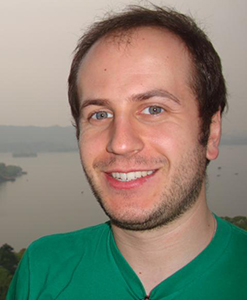 Adam Chruscicki, Howe Lab, Department of Biochemistry & Molecular Biology, UBC presents: “Regulation of chromatin by FACT and NuA3”, April 15th @ 3:00 p.m. in LSC #3, 2350 Health Sciences Mall, UBC
Adam Chruscicki, Howe Lab, Department of Biochemistry & Molecular Biology, UBC presents: “Regulation of chromatin by FACT and NuA3”, April 15th @ 3:00 p.m. in LSC #3, 2350 Health Sciences Mall, UBC
Read More | No Comments
Posted on February 28, 2013
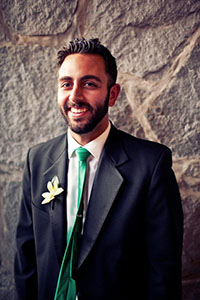 Matthew Dahabieh, Sadowski Lab, Department of Biochemistry & Molecular Biology, UBC presents: “Regulation of HIV-1 Latency by Basel Transcription”, March 25, 2013 @ 4:00 p.m. in LSC #3, 2350 Health Sciences Mall, UBC
Matthew Dahabieh, Sadowski Lab, Department of Biochemistry & Molecular Biology, UBC presents: “Regulation of HIV-1 Latency by Basel Transcription”, March 25, 2013 @ 4:00 p.m. in LSC #3, 2350 Health Sciences Mall, UBC
Read More | No Comments
 “The ABC’s of Amphiphilic Block Copolymers: Nanoparticulate Drug Carriers and Modulators of Drug Efflux”, by Dr. Kevin Letchford, Faculty of Pharmaceutical Sciences, UBC. Monday, April 8, 2013 @ 3:00 pm in LSC #3, 2350 Health Sciences Mall.
“The ABC’s of Amphiphilic Block Copolymers: Nanoparticulate Drug Carriers and Modulators of Drug Efflux”, by Dr. Kevin Letchford, Faculty of Pharmaceutical Sciences, UBC. Monday, April 8, 2013 @ 3:00 pm in LSC #3, 2350 Health Sciences Mall. “Bugs ‘R Us: The Role of Microbes in Health, Disease and Society”, lecture with Dr. B. Brett Finlay, Peter Wall Institute Distinguished Professor, Professor in the Department of Biochemistry & Molecular Biology and Department of Microbiology & Immunology at UBC. For free tickets: Peter Wall Downtown Lecture Series held at the Vogue Theatre at 7:30. Doors open at 6:30.
“Bugs ‘R Us: The Role of Microbes in Health, Disease and Society”, lecture with Dr. B. Brett Finlay, Peter Wall Institute Distinguished Professor, Professor in the Department of Biochemistry & Molecular Biology and Department of Microbiology & Immunology at UBC. For free tickets: Peter Wall Downtown Lecture Series held at the Vogue Theatre at 7:30. Doors open at 6:30.





